Discover Tent Camping Best place Bnaff Radi Rum IOutback Patagonia Lake District
Make memories where tranquility meets adventure—from starlit skies and forest trails to riverside mornings and mountain air.
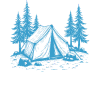
Forest Camp
Via Booking

Campfire Gear
Via nomads
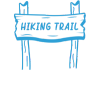
Hiking Trails
Via Klook
Where Adventure Meets Campfire Nights
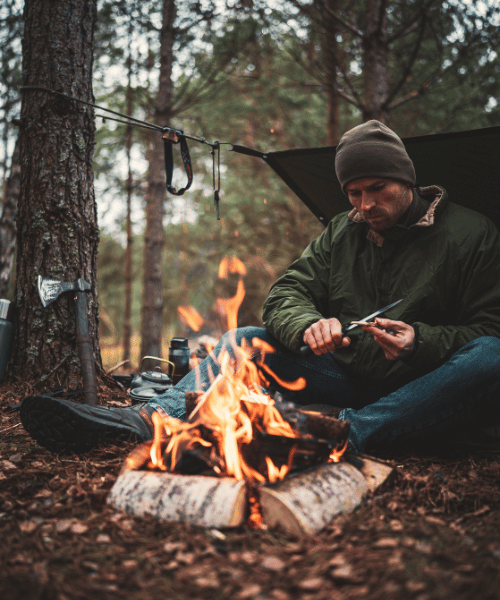

Banff National Park
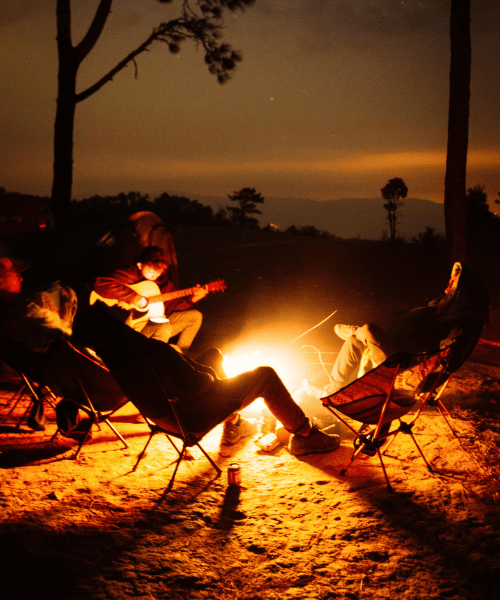
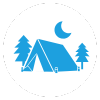
Radi Rum
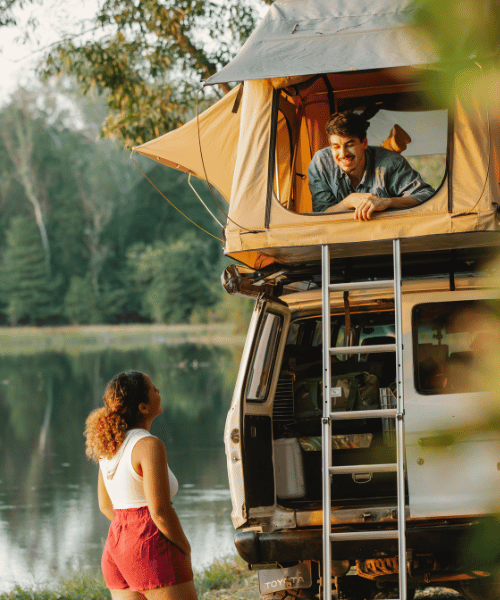

The Outback, Australia
What are the best places in the world for camping under the stars?
If you’re looking for unforgettable stargazing, some places feel like they were made for it. Wadi Rum in Jordan offers red deserts and pitch-black skies with zero light pollution. Fairy Meadows in Pakistan lets you camp beneath the mighty Nanga Parbat, surrounded by quiet wilderness. For icy beauty, head to Patagonia or Banff National Park—remote, wild, and full of stars. And if you’re lucky, Skógafoss in Iceland might even treat you to the Northern Lights.
What do I need to bring on a mountain camping trip?
Bring layered clothing, thermal equipment, weatherproof tent, cold-rated sleeping bag, headlamp, portable stove, and high-energy snacks. Don‘t forget altitude necessities such as water purification tablets and medication for unexpected weather changes.
When is the best time to desert camp?
The best time is in spring (March–May) and autumn (September–November) when days are warm but not hot, and nights are cool enough for campfires. Summers are usually hot enough to be hazardous for desert camping.
Is wild camping legal ?
It varies. In Scotland, for instance, wild camping is permitted. In the U.S., Canada, and Australia, it is allowed on some public lands. Check local laws and national park regulations before you pitch a tent.
What are the top essentials for first-time campers?
Necessities involve a decent tent, sleeping bag, cooking equipment, flashlight, navigational instruments, and minor hygiene supplies. Comfort is also important—consider bringing a pad or mat, and always include extra layers, even if you think you don’t need them.
What food should I bring for a 3-day camping trip?
Select light, protein–rich foods such as nuts, dried fruit, granola, instant meals, and packet soups. If you‘re taking a stove, include pasta, rice, or canned legumes. Take more than you believe you might need.
How is glamping different from camping?
Traditional camping means roughing it—tents, firewood, and nature. Glamping (glamorous camping) adds amenities such as beds, running water, and occasionally electricity—ideal for those who love nature without wanting to give up luxury.


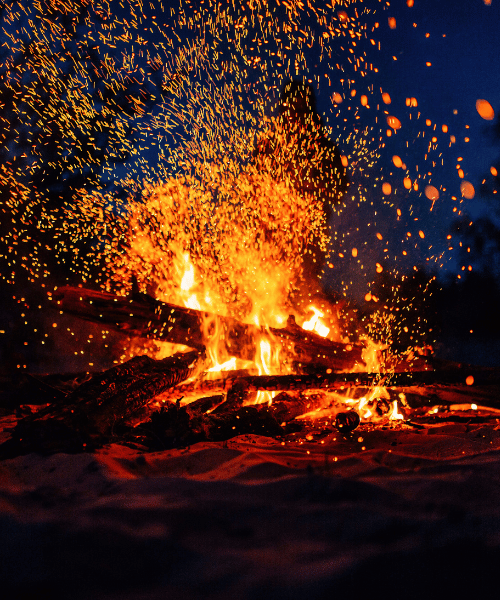

Camping Gear
via REI

Outdoor Essentials
via Decathlon

Tents & Shelters
via Coleman
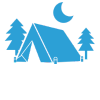
Survival Tools
via Amazon

Find Campsites
via Hipcamp

Cooking Gear
via GSI

Stargazing Equipment
via Celestron

eBook Guide
via Gumroad
Banff National Park, Canada – A Majestic Mountain Campfire Destination
Set amidst the heart of the Canadian Rockies, Banff National Park is a stunning wilderness of turquoise lakes, snow-capped mountain peaks, and forests. From looking at the panoramic views or listening to the soothing rustling of the pine trees, Banff provides an unforgettable campfire experience. This UNESCO World Heritage Site is ideal for a night out under the stars, surrounded by nature’s beauty.
From walking around the legendary Lake Louise to discovering the diverse wildlife, Banff provides a flavor of Canada’s untamed heart. The breathtaking scenery, historical significance, and peaceful environment make this an ideal camping haven.
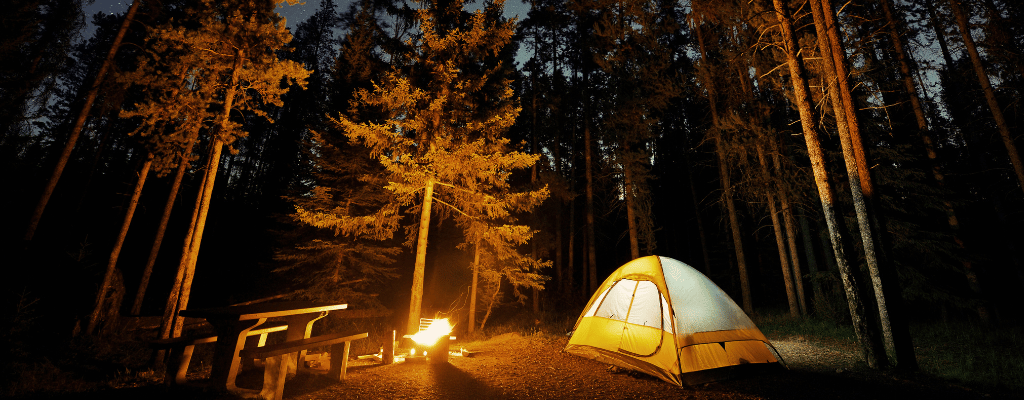
Best Time to Visit Banff:
Summer (June to August) for hiking, sightseeing, and exploring lakes
Daytime temperatures of 15°C to 25°C
Evening temperatures suitable for warm campfires under the night sky
Winter months bring skiing, but camping can be challenging due to snow.
What You’ll Need:
Layered clothing for varying temperatures
Warm sleeping bag for cool nights
Camping stove for cooking or a fire starter
Hiking boots for mountain trails
Sunscreen and sunglasses (even in cooler weather)
Campfire Tips:
Choose official campgrounds to ensure a safe and eco-friendly experience
Watch out for wildlife and keep your food secure to prevent attracting bears
Wadi Rum, Jordan – A Whimsical Desert Campfire Spot
Hidden away in southern Jordan, Wadi Rum—better known as the “Valley of the Moon“—is arguably the most breathtaking destination on our planet to have a serene campfire evening. Its expansive red sand dunes, monumental rock structures, and expansive open heavens make for a wonderful place to star-gaze, share tales, and renew your connection with nature at night.
A UNESCO World Heritage Site, Wadi Rum is not just renowned for its natural splendor but also its rich cultural heritage and film industry appeal. Shot here were such movies as Dune, The Martian, and Lawrence of Arabia, but beyond Tinseltown, there’s a primitive and spiritual desert camping experience here in the midst of the arid landscape.
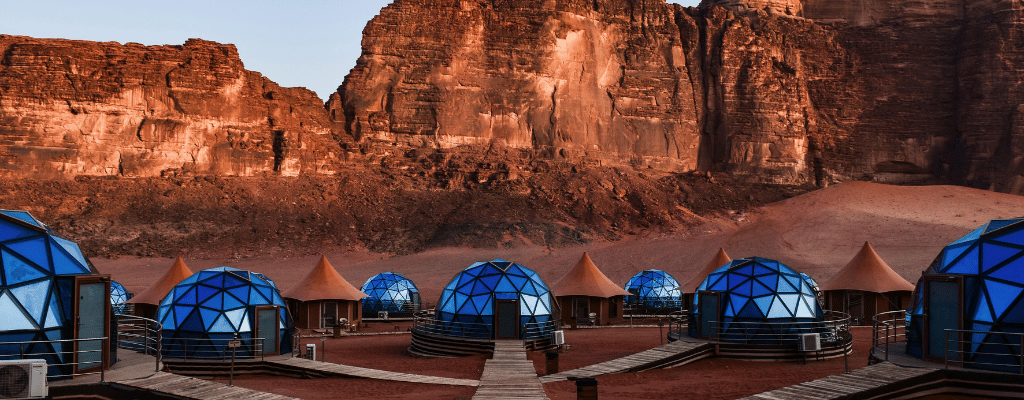
Best Time to Travel to Wadi Rum:
Spring (March to May) and Autumn (September to November)
Daytime temperatures between 18°C and 30°C
Nights are pleasantly cool — ideal for fires and sleeping under the stars
Summer months can be extremely hot, so are best avoided for camping.
What You’ll Need:
Layered clothing or a warm jacket for cooler nights
Sleeping bag or insulated mat for ground comfort
Flashlight or headlamp (there’s no artificial light)
Moisturizer and lip balm for dry desert air
Power bank or solar charger
Sun protection such as hat and sunscreen
Campfire Tips:
Reside with a local Bedouin camp for authentic experience
Take Zarb—meat cooked underground in desert ovens
Always utilize fire spots to safeguard the delicate ecosystem
The Outback, Australia – Firelight in the Heart of the Wild
There is something hauntingly lovely about Australia‘s Outback—a land where red earth goes on for miles, and silence is holy. Out here, the sunsets paint the sky deep orange, the air gets chilly quickly, and that‘s when you sit around a humble campfire. No crowds, no lights—just you, the sound of the wood burning, and a night that feels timeless.
Camping near spots like Uluru or the MacDonnell Ranges, you’re not just setting up a tent—you’re stepping into a land where stories have been passed down for over 60,000 years. Under a sky full of stars, even the wind seems to whisper something old and wise.
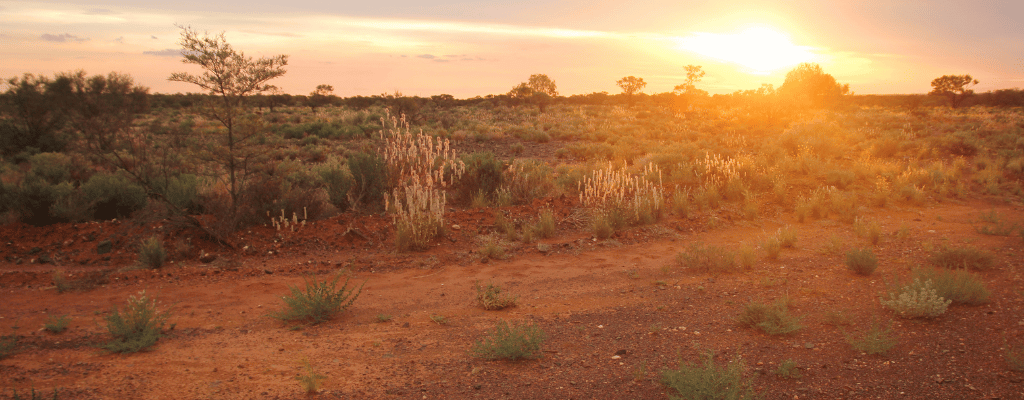
Best Time to Travel to Wadi Rum:
May to September – cool, dry, and safe for camping
Daytime: around 20–28°C
Nights can dip below 10°C, so bring layers
What You’ll Need:
Plenty of water—this isn’t a place to run dry
Fly net for your face (seriously, it’s a must)
Warm sleeping bag—the nights bite
Torch or headlamp for navigating after dark
Maps or GPS—signal disappears fast
Dry firewood—not always easy to find on site
Campfire Tips:
Always use designated fire circles if they’re available
Join a guided campfire tour with local Aboriginal guides—listen, learn, respect
Cook plain: experiment baking damper in the coals and boiling tea in a billy can
Have low fires at all times and never leave them untended—wind blows quickly out here
Patagonia, Argentina & Chile – Campfire on the Edge of the World
Patagonia does not breathe life into you—it salvages your air for an instant. Spreading across the south of Chile and Argentina, the region is unrestricted, wild, and so quiet that one imagines the world stops here. Imagine yourself resting beside a small campfire, snug in a valley surrounded by jagged mountains, glaciers glistening on the horizon, and the wind humming its own siren song.
Camping here is not about convenience. It’s about surrendering to the vastness. Whether you’re near Torres del Paine in Chile or in the shadow of Mount Fitz Roy in Argentina, Patagonia reminds you to slow down, listen, and feel small in the best possible way.
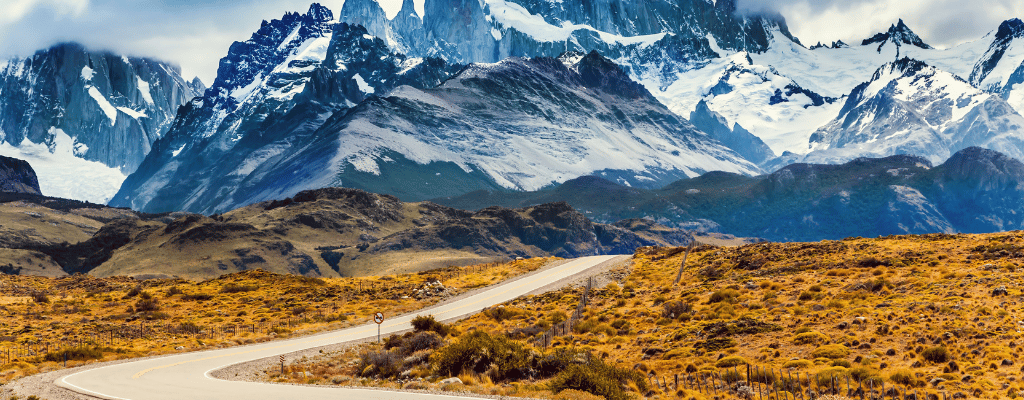
Best Time to Travel to Wadi Rum:
November to March (summer of the Southern Hemisphere)
Daytime temperatures between 10°C to 20°C
Nights are cool and crisp—perfect for a fire and warm drink
What You’ll Need:
Windproof layers—the wind here is no joke
A warm sleeping bag (even in summer, nights get cold)
Dry bags to protect your gear from sudden weather shifts
Portable stove or fire-safe gear (campfires aren’t always allowed)
Snacks or high-energy food—distances are long out here
Reusable water bottle—many streams are glacier-fed and fresh
Campfire Tips:
Always use designated campsites Patagonia is fragile and protected
Have small fires, attended at all times, and properly extinguished at last
At night, just relax. The southern stars will take care of the rest
Lake District, UK – Fireside Peace in the Land of Misty Hills
The Lake District is not noisy. It does not attempt to overwhelm you. Rather, it envelops you in silence—rolling green hills, still lakes, and stone roads that wind through ageless villages. It is a place where all slows down, and when you kindle a campfire on the edge of a lake or hidden in a forest glade, it seems as if the world recedes.
Here, you rise to fog rising off the lake and fall asleep to soft rain on canvas. Whether close to Buttermere, Derwentwater, or deep among trees near Grizedale, this is soul camping.
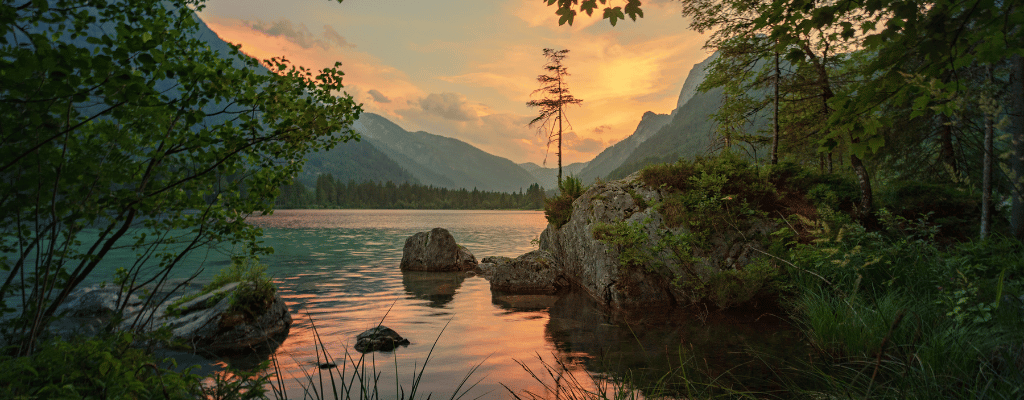
Best Time to Travel to Wadi Rum:
Late Spring to Early Autumn (May to September)
Mild days: 12°C to 22°C
Damp and chilly evenings—pack wisely
What You’ll Need:
Waterproof tent and jacket—rain is always a possibility
Thermal blanket or insulated sleeping bag
Portable stove or controlled fire pit (open fires are restricted)
Headlamp—many sites have minimal lighting
Insect repellent—especially near water
Good walking boots—you’ll want to explore
Campfire Tips:
Fires are only allowed in specific sites—always check before lighting
Cook simple: warm up local Cumberland sausage or toast fresh bread
Bring a book, or simply sit in silence—this land was made for reflection
Respect nature—leave no trace and let the quiet stay quiet
Maasai Mara, Kenya – Campfire Under African Skies
There‘s no place like the Maasai Mara. The endless savannah stretches out, golden and untamed, where acacia trees rise up like silhouettes and animals roam as they‘ve always done. When the sun goes down over the grasslands and your campfire comes to life, everything seems deeper—older. This isn‘t camping. It‘s being a part of something timeless.
You sit beside the flames, wrapped in a blanket, while the distant calls of lions or hyenas echo softly across the plains. It’s not fear—it’s awe. Whether you’re staying in a traditional safari camp or setting up in a more remote corner, the firelight here glows with the spirit of Africa.
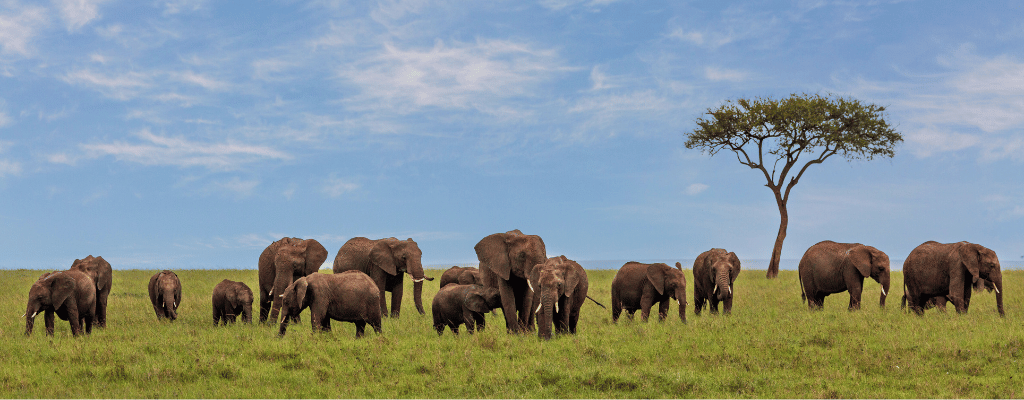
Best Time to Travel to Wadi Rum:
July to October (Great Migration season & dry weather)
Daytime: 25°C to 30°C
Nights cool down to about 12–15°C—ideal for bonfires
What You’ll Need:
Neutral-hued clothes to blend in on drives
Warm coat for nights by the fire
Headlamp or lantern—pitch black after dark
Insect repellent—primal in the bush
Campfire Tips:
Let local Maasai guides take the lead—they know the land’s rhythm
Partake in campfire songs or tales of old—it‘s a treasure
Steer clear of loud sound or bright light—wildlife is never far away
Never stray far from camp at night
Yosemite National Park, USA – Campfires Under Giant Shadows
In Yosemite National Park, campfires are not merely about warmth—they‘re about awe. Under the flicker of embers under towering sequoias and granite monoliths like El Capitan and Half Dome, the wild is intimate. The scent of pine and wood smoke fills the air, and the crackling flames resonate softly throughout the valley like they’re a part of the forest‘s own pulse.
In every direction, you‘re face to face with postcard-worthy views, yet nothing appears arranged. The Merced River passes close by, moonlight flickers on walls of granite, and somewhere, a coyote sings in the distance. Be it in Yosemite Valley, in the vicinity of Tuolumne Meadows, or at some private High Sierra backcountry location, the campfire is an observation deck for the quiet display put up by nature.
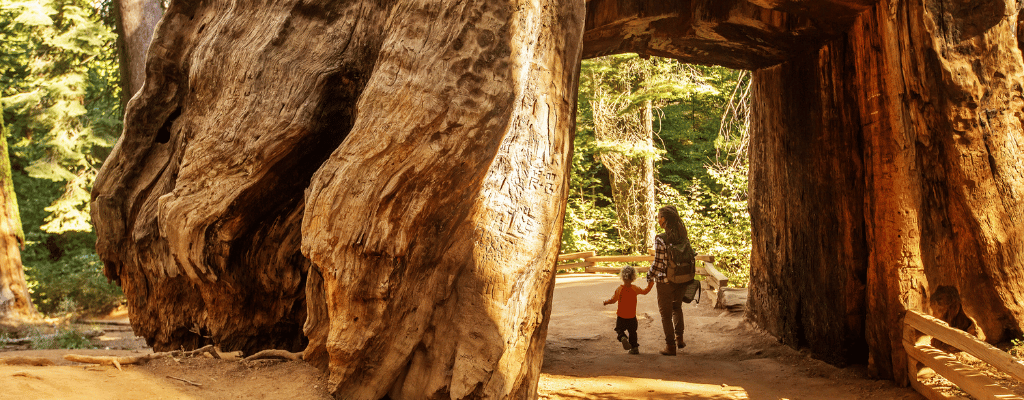
Best Time to Travel to Wadi Rum:
Late May to September
Day: 20°C to 30°C
Night: cool to about 8°C to 12°C—ideal for snuggling up with the fire
What You’ll Need:
Layered outfit—days warm, nights chilly quick
Bear-safe storage (required)—curious black bears reside in Yosemite
Sleeping pad & insulating sleeping bag—comfort first at high altitude
Firewood—only purchase inside the park so as not to spread invasive bugs
Campfire Tips:
Fires are permitted only within rings at authorized campgrounds
Don‘t miss roasting s‘mores—it‘s a Yosemite tradition
Be careful—never leave a fire unattended, even for an instant
Make time for stargazing—Yosemite‘s nighttime skies are breathtaking, especially at Glacier Point
Fairy Meadows, Pakistan – A Campfire Night at the Roof of the World
Picture this: sitting by a roaring fire, the aroma of pinewood wafting through the air, and in front of you—Nanga Parbat, towering silently above. That is Fairy Meadows. It is not noisy. It is not bustling. It is you, the wilderness, and the sky so near you think you can reach out and touch the stars.
To arrive here, you‘ll begin from a secluded village named Raikot, then hold on tight for a jeep ride that‘s more adrenaline than luxury—narrow cliff-top roads and unprocessed beauty every few kilometers. Then, there‘s a short but arduous trek from Tattu village. But when you do arrive at Fairy Meadows, it is all worth it. Lush green meadows, wooden chalets, and that view—Nanga Parbat’s frozen face aglow in moonlight—it‘s something that’ll stay with you forever.
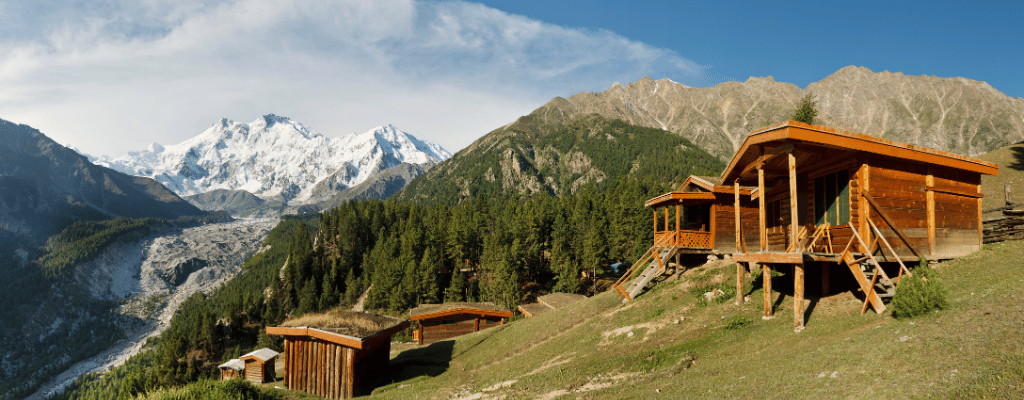
Best Time to Travel to Wadi Rum:
Mid-May to end of September
Days are mild: around 15°C to 20°C
Nights drop fast: often close to 0°C or just above—perfect for fire warmth
What You’ll Need:
Warm layers—the temperature shifts fast here
Insulated sleeping bag—you’ll thank yourself at night
Flashlight or headlamp—no electricity after sunset
Food & dry snacks—basic meals are available but limited
Comfortable trekking shoes—the hike in is no joke
Reusable bottle—fresh glacial water is available
Campfire Tips:
Locals can assist you in making a fire—they are friendly and hospitable
Keep fires small and controlled—this is a sanctified alpine zone
Don‘t anticipate luxury—anticipate simplicity
Make it memorable: sing, share stories, drink chai, and simply inhale
